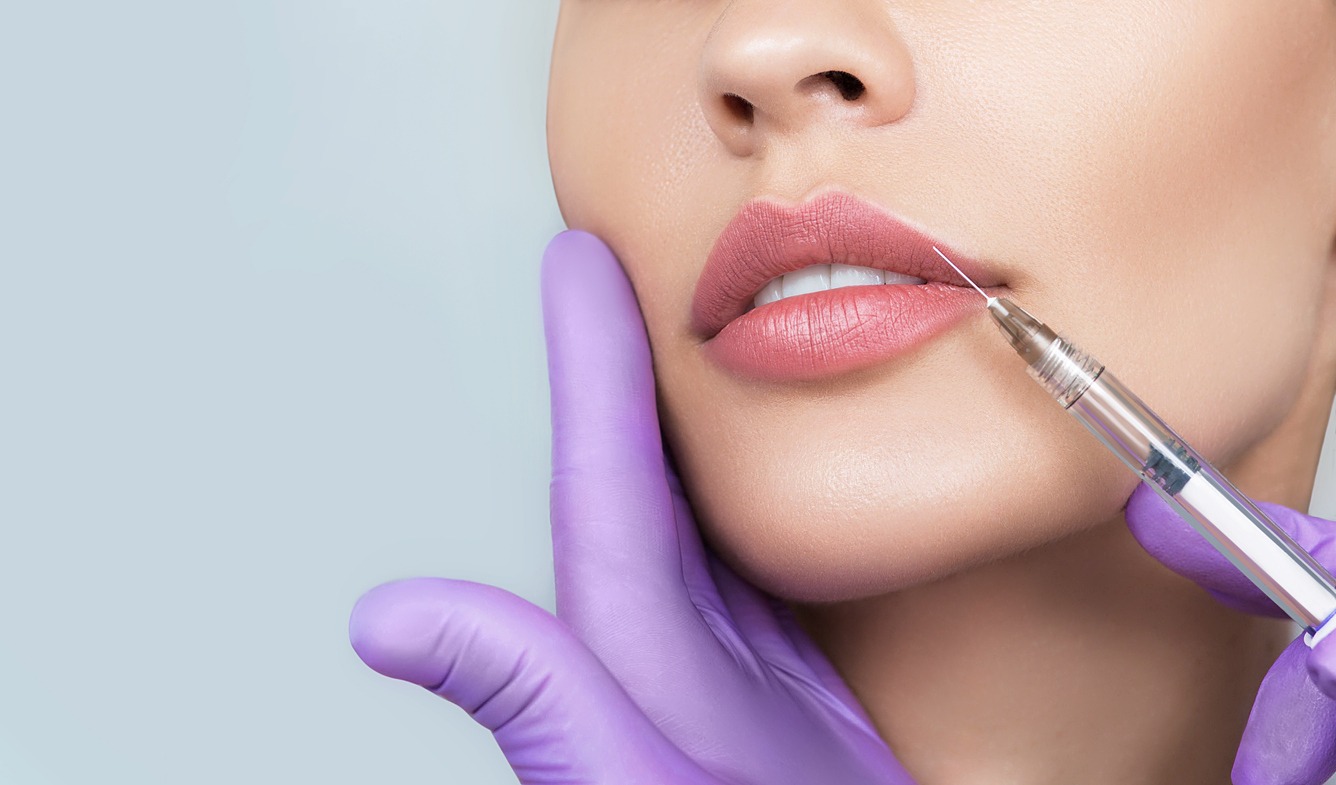Cosmetic lip enhancement has seen a significant rise in popularity over recent years, with a variety of procedures available to those seeking fuller, more defined lips. The quest for the perfect pout can involve injections, fillers, or even surgery, depending on the desired outcome and individual considerations. This blog post will provide a comprehensive overview of the different types of cosmetic lip enhancement procedures, including their benefits, potential risks, and what one can expect from each.
Lip Injections: A Quick and Customizable Solution
Lip injections are a popular method for enhancing lip volume and contour.
Procedure: The process involves injecting the HA directly into the lip tissue, where it binds to water molecules, adding volume and hydration. The procedure is quick, typically taking less than an hour.
Recovery: Post-procedure, patients can expect some swelling and bruising, which usually subsides within a week. Most people can return to their normal activities immediately after the treatment.
Benefits: The results are temporary, lasting around 6 to 12 months, which can be a positive for those unsure about committing to a permanent change. If the patient is dissatisfied with the outcome, HA fillers can be dissolved with an enzyme called hyaluronidase, making this a reversible procedure.
Risks: Common risks include bruising, swelling, and asymmetry, but more severe complications, while rare, can include infection or vascular occlusion.
Lip injections, commonly referred to as dermal fillers for the lips, primarily use materials that are biocompatible and temporary, offering a non-permanent solution for those seeking to enhance lip volume and shape. Here are the most common types of materials used for lip injections:
Hyaluronic Acid (HA) Fillers
Hyaluronic acid is a naturally occurring substance in the skin that helps to retain moisture and add volume. HA fillers are the most popular type of lip injections due to their safety profile, effectiveness, and relatively natural results. Brands like Juvederm, Restylane, and Teosyal offer various formulations specifically designed for the lips.
Benefits of HA fillers include:
- Immediate results
- Minimal downtime
- Reversible with the enzyme hyaluronidase
- Customizable volume depending on the amount injected
Collagen
Once the standard for lip injections, collagen fillers are less common today due to the development of newer, longer-lasting fillers. Collagen used to be derived from bovine sources, which required allergy testing before use. However, newer collagen fillers are created using bioengineered human collagen designed to minimize allergic reactions and provide a more natural look.
Calcium Hydroxylapatite (CaHA)
Calcium hydroxylapatite is a mineral-like compound naturally found in human bones. It is used in a filler called Radiesse, which is FDA-approved for facial and hand augmentation. In the context of lip injections, CaHA is typically used to enhance the structure and definition rather than just adding volume.
Poly-L-lactic Acid (PLLA)
Poly-L-lactic acid is a biodegradable synthetic substance that has been used for years in medical devices like dissolvable stitches. As a filler, PLLA (known as Sculptra) is not typically used directly in the lips but can be used around the mouth area to increase skin thickness and improve the appearance of wrinkles.
Polymethylmethacrylate (PMMA)
Polymethylmethacrylate (PMMA) is a synthetic, biocompatible substance that, when used as a filler, comes in the form of a microsphere or tiny ball. It is typically suspended in a gel-like solution that contains collagen. Bellafill is a well-known brand that contains PMMA and is used for deep wrinkles and sometimes in the perioral area, but it is not commonly recommended for direct lip enhancement due to its permanence and potential for complications.
Fat Transfer: Natural and Long-Lasting
For those looking for a more permanent solution, fat transfer to the lips may be an option. This procedure involves harvesting fat from another part of the body, purifying it, and then injecting it into the lips.
Procedure: Fat is typically taken from areas like the abdomen or thighs, using liposuction. The fat is then processed and injected into the lips.
Recovery: Recovery from fat transfer can take longer than HA fillers due to the liposuction component. Swelling and bruising may last for a couple of weeks.
Benefits: The results tend to look very natural and can last for several years. Additionally, because the fat is harvested from the patient’s own body, there is no risk of an allergic reaction.
Risks: As with any surgery, there are risks of infection and anesthesia complications. There is also the possibility that some of the transferred fat will not survive, leading to asymmetry or the need for additional procedures.
Lip Implants: A Permanent Enhancement
Lip implants offer a permanent solution to lip augmentation and are made from materials that feel natural under the skin.
Procedure: Small incisions are made in the corners of the mouth, and the implants are inserted into the lips.
Recovery: Recovery time is typically around 1 to 2 weeks, with some patients experiencing minor discomfort, swelling, and bruising.
Benefits: The results are permanent, which means no need for repeat procedures, and the implants can be removed if desired.
Risks: In addition to the risks associated with any surgical procedure, there is a risk of the implant shifting, which could require additional surgery to correct.
The materials used for lip implants must be biocompatible (not harmful to living tissue) and ideally should mimic the natural feel of lip tissue. Here are some of the materials commonly used for lip implants:
Silicone Lip Implants
Silicone is a widely used material for lip implants due to its durability and the natural feel it provides. Implants like PermaLip™ are made from soft, solid silicone that can be shaped to match the contour of the lips. They are non-biodegradable, which means they don’t break down in the body over time, offering a permanent solution to lip augmentation.
Expanded Polytetrafluoroethylene (ePTFE)
Expanded polytetrafluoroethylene, best known under the brand name Gore-Tex™, is another material used for lip implants. It has been used in medical procedures for decades. ePTFE implants are soft and flexible and have a porous structure, which allows the body’s tissue to grow into the implant, helping to keep it in place.
Ultrasoft AlloDerm
While not a synthetic implant, AlloDerm is a naturally derived product made from donated human skin tissue. The cells are removed, leaving behind a collagen framework that integrates well with the body’s natural tissues. It’s often used in various reconstructive surgeries and can also be used for lip enhancement, although it’s not considered a permanent implant because it is eventually absorbed by the body.
Hyaluronic Acid (HA) Gel
Although not used for traditional solid implants, HA is a common material for injectable lip fillers, which can offer semi-permanent results with repeated treatments. HA fillers are not solid implants but are worth mentioning as they are a popular alternative to implants for lip augmentation.
Lip Lift: Refining Lip Shape and Fullness
A lip lift is a surgical procedure that shortens the space between the top of the lip and the base of the nose, lifting the lip to expose more volume and dental show.
Procedure: This is done by removing a strip of skin under the nose and lifting the lip to its new position, which enhances the shape and fullness of the lip.
Recovery: The recovery period is generally about 1 to 2 weeks. Patients may experience swelling and need to take care to not disrupt the sutures.
Benefits: The results of a lip lift are permanent and can greatly rejuvenate the patient’s appearance.
Risks: As with any surgical procedure, risks include scarring, infection, and dissatisfaction with cosmetic results.
Choosing the Right Procedure
When considering lip enhancement, it is crucial to consult with a board-certified plastic surgeon or dermatologist who specializes in cosmetic procedures. They can provide advice tailored to individual facial features, skin type, lifestyle, and aesthetic goals.
Pre-Procedure Considerations
Prior to any procedure, a thorough medical history and a discussion of the desired outcome are necessary. It is essential to have realistic expectations and to understand both the potential benefits and risks.
Post-Procedure Care
Post-procedure care is critical to achieving the best results and minimizing the risk of complications. Patients will be advised on how to care for their lips following the procedure, including any necessary follow-up appointments.
Conclusion
Lip enhancement procedures offer a range of options for those looking to augment their lips. Each procedure comes with its own set of benefits and considerations, and the choice will depend on the individual’s


